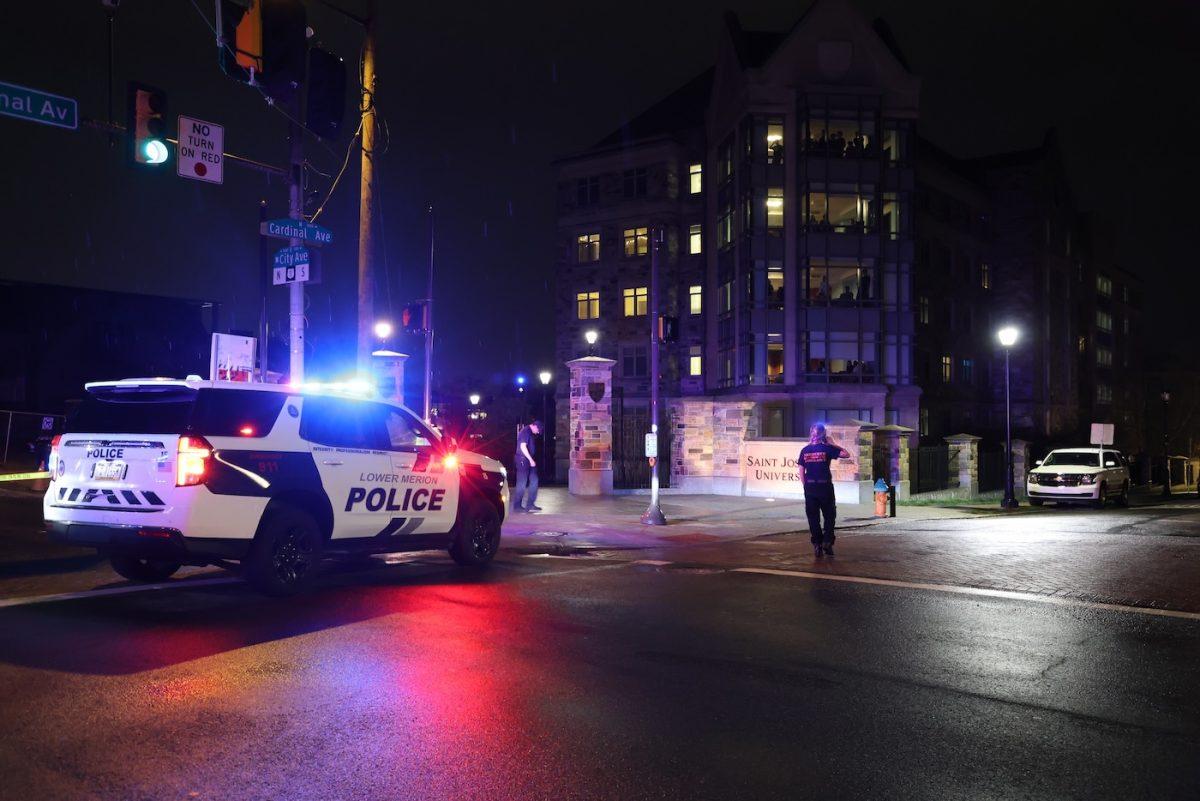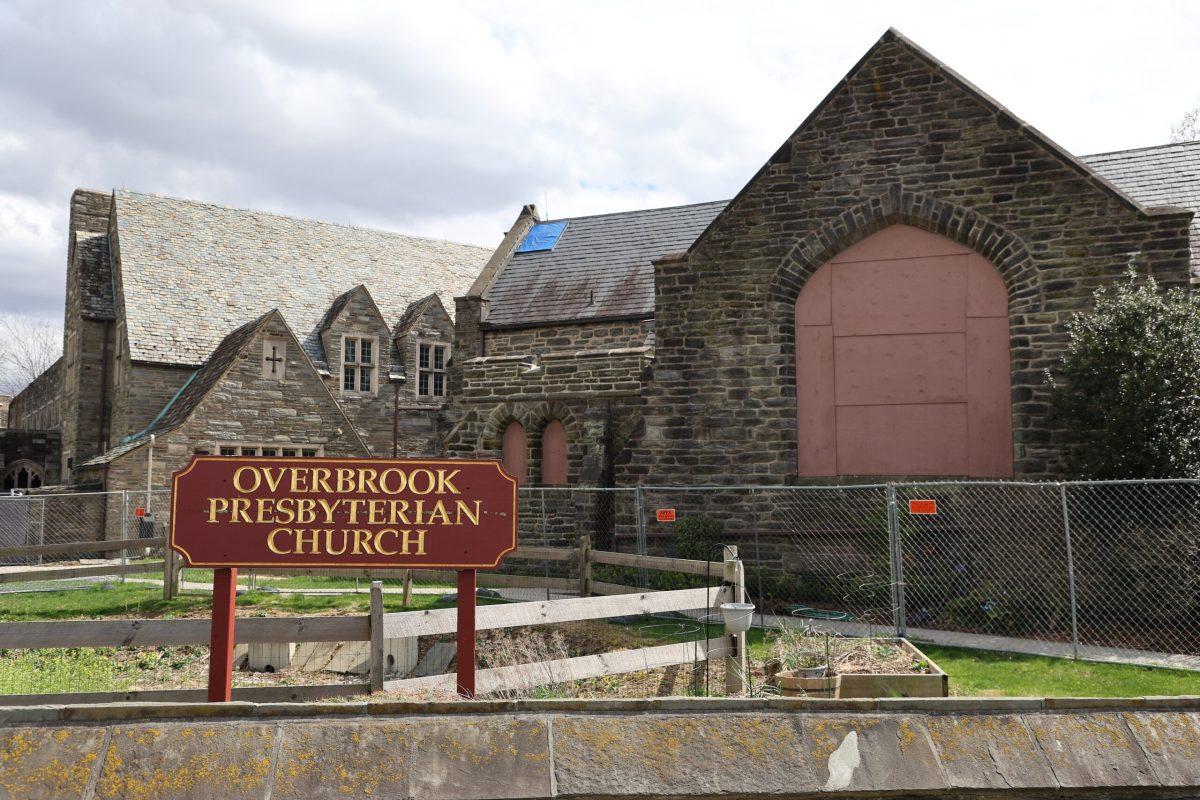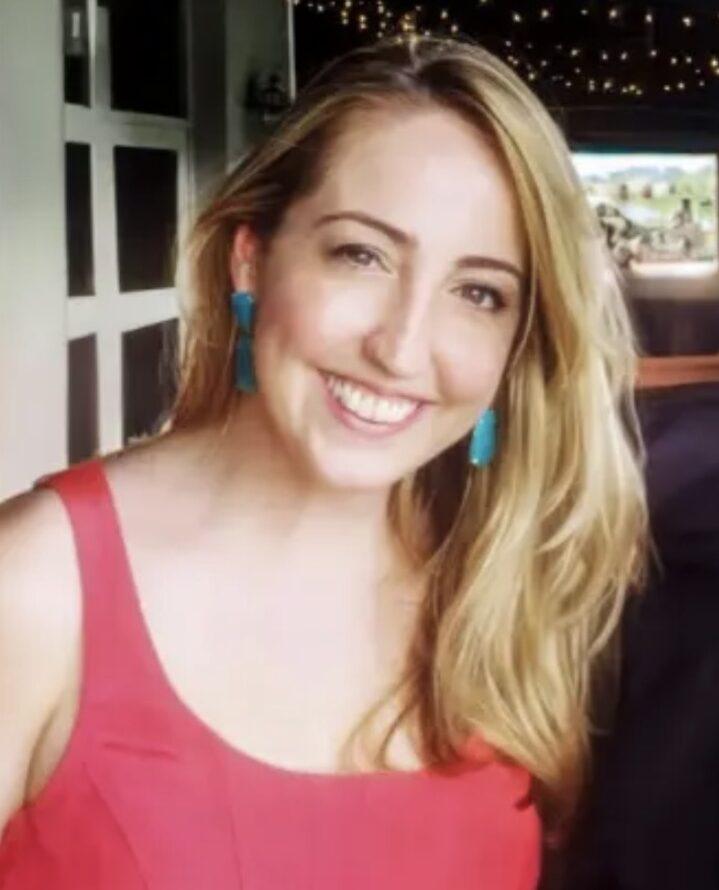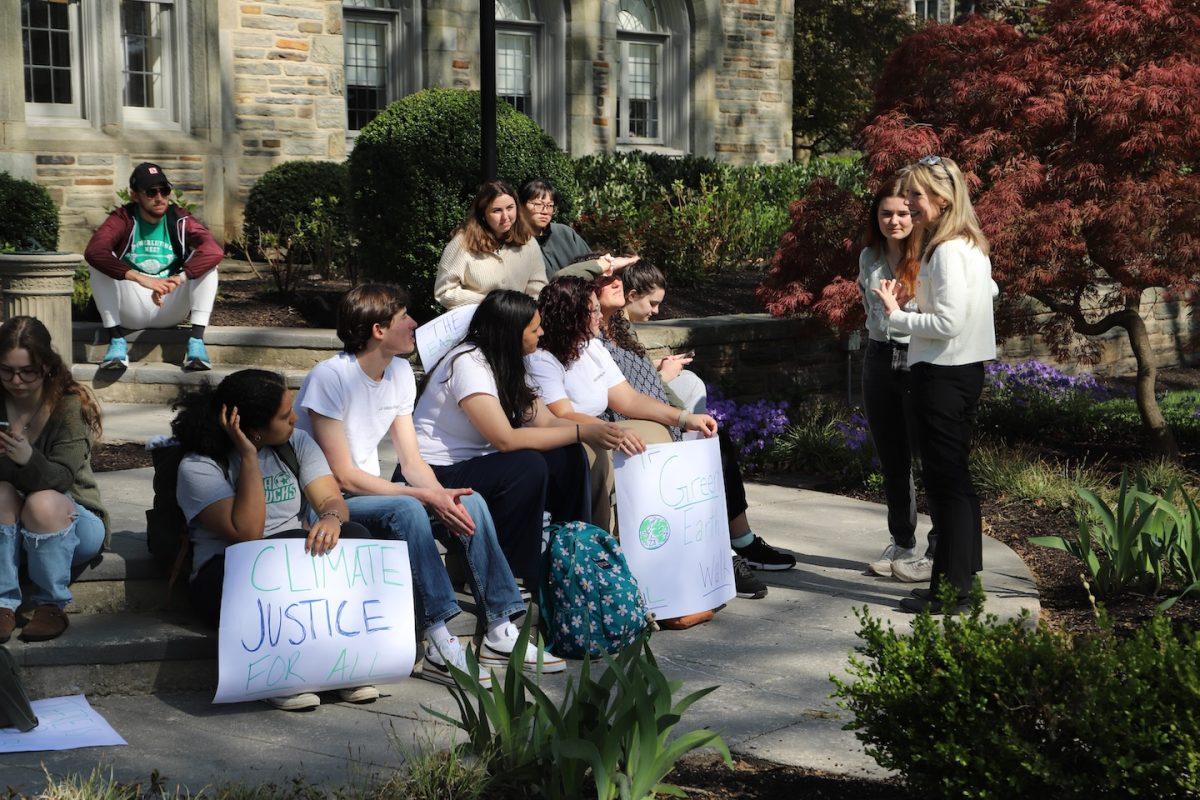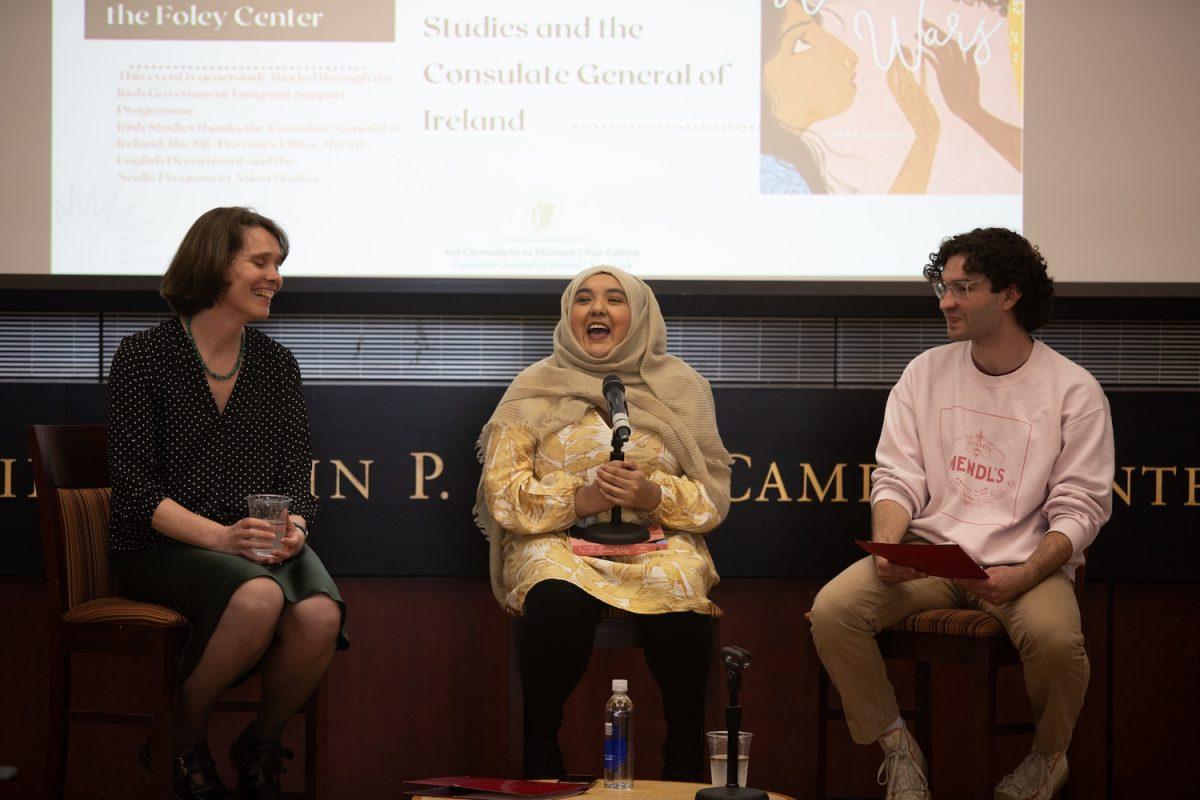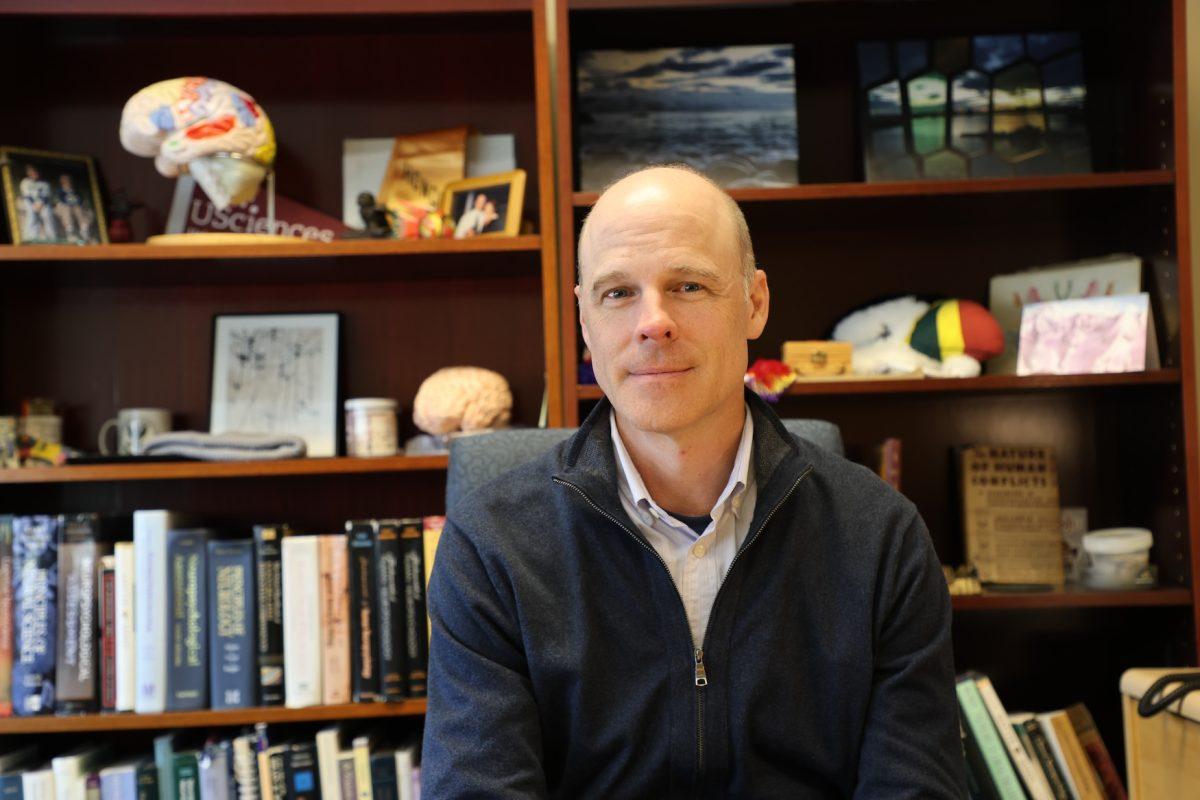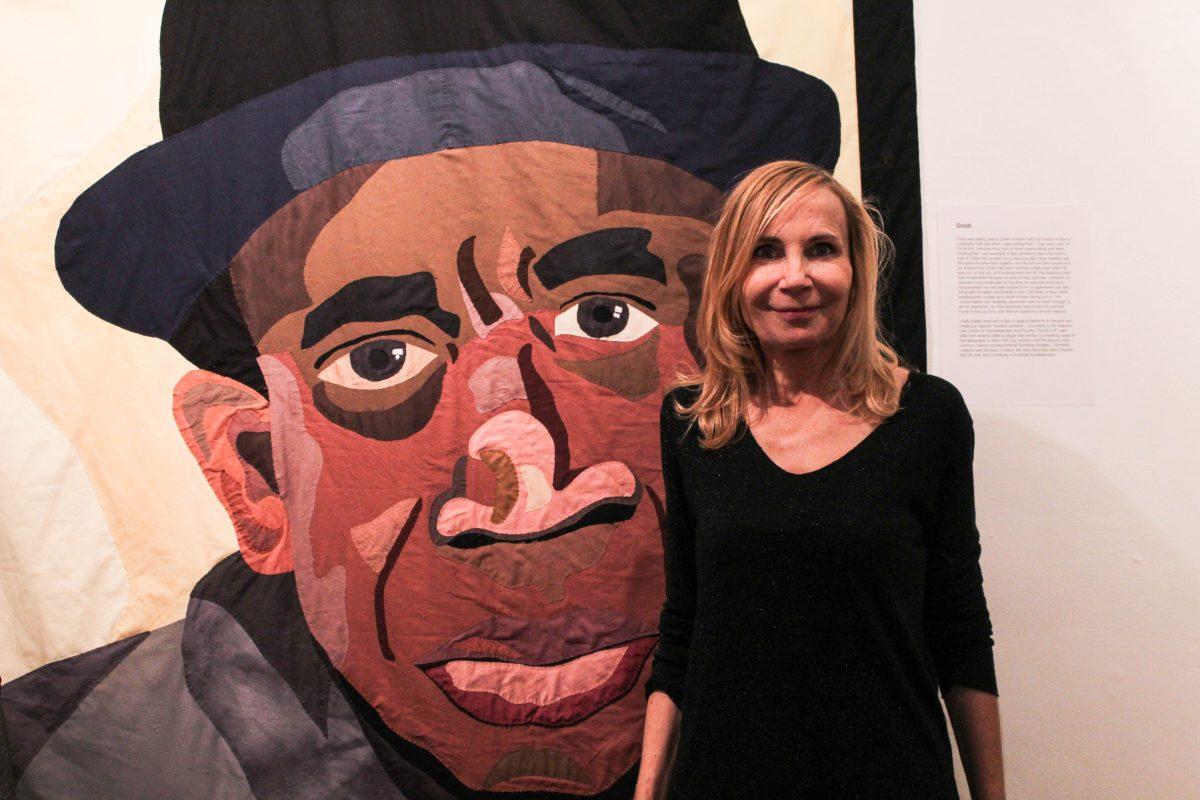Philadelphia artist sheds light on homelessness epidemic
There are approximately 5,700 people in Philadelphia that are considered to be homeless as of 2018, contributing to the 552,830 total individuals experiencing homelessness in the U.S. More often than not, this population is forgotten or ignored. Artist Carolyn Harper combats this problem with her new collection titled “Look Me in the Eye: Portraits of Homelessness,” which opened publicly on Oct. 30 at the Muse Gallery in Old City.
The exhibition aims to put a face to the problem of homelessness through hand-stitched textile portraits of individuals experiencing homelessness in the Philadelphia area.
Harper explained that she was raised to care about social justice issues, including homelessness, but didn’t explore these issues through her artwork until she became a mother herself.
“When my kids were little, I felt that they were entering into a world that was so unfair,” Harper said. “I wanted to try to do something to change it, but I felt helpless, and then I realized that as an artist I could address it in that way.”
Each portrait was accompanied by text telling an anecdote about the person and Harper’s experience talking to them. In addition, Harper paired each story with statistics and facts about homelessness.
Each individual’s story was different and touched on other issues like the LGBTQIA+ community, mental illness and drug addiction.

Tim Caison, a Philadelphia local, attended the gallery and said he was very moved by Harper’s work.
“Carolyn really captured a lot of different subjects as far as epidemics that are happening in the world today and then she puts it on a medium that’s really inviting,” Caison said. “It is something tactile, that you can touch and relate to, it makes it more relatable as she’s telling such sensitive stories and making awareness for the homeless population.”
To Harper, the act of hand stitching the pieces is extremely important in conveying the message of each piece.
“The works really come from my heart,” Harper said. “Every piece is hand stitched except for the borders. To me that’s really important because it represents more than a stitch. It’s representative of a person’s life and how hard life can be.”

Kathleen Gallo, another attendee of the exhibition, said the materials used to compose the portraits reminded her of materials that are often used to construct makeshift shelters, which helps amplify the message.
“[The artworks] remind me of a blanket or a tarp,” Gallo said. “I think [they] act to rehumanize these people.”
Not only do the portraits bring attention to the issue of homelessness, but they also act as a form of empowerment for the subjects. Harper explained another project she worked on at a homeless shelter where she made portraits of the people there, and gifted them with their portrait afterwards.
“I found that it was really empowering because they saw the portraits of themselves and they were able to see themselves as not just homeless or jobless, but as an individual that transcends those labels,” Harper said.
Often times, each person Harper talks to is grateful to be acknowledged. She offers her subjects money in exchange for having a conversation and taking a photo she can recreate into a textile portrait of them.
“I’ve never been turned away,” Harper said. “A lot of times I’ll ask if they want to have a meal with me, and sometimes that happens and they’re definitely interested in the money, but sometimes they’ll say to me, ‘You’re the first person all week that’s treated me like a human,’ or ‘thank you for talking to me.’”
She said she always tries to find the subjects of her larger pieces, which can take weeks to months to complete, but it can be difficult to locate them since they are living on the street.
Harper said conversation and finding common ground is the key to combating social justice issues like homelessness that plague our nation.
“We live in such polarized times,” Harper said. “I feel like the only way to get past that is to be open to those differences.”
Harper thinks people tend to be afraid of those who are different than them, but it’s about finding commonalities within our humanity. Harper explained that it may be scary to approach a person experiencing homelessness, but it’s just about acknowledging them as a person and just saying hello.
“It was scary the first time I approached a homeless person,” Harper said. “But then I realized there’s not that much difference between us.”
“Look Me in the Eye: Portraits of Homelessness” will be on display until Dec. 1 at the Muse Gallery.

